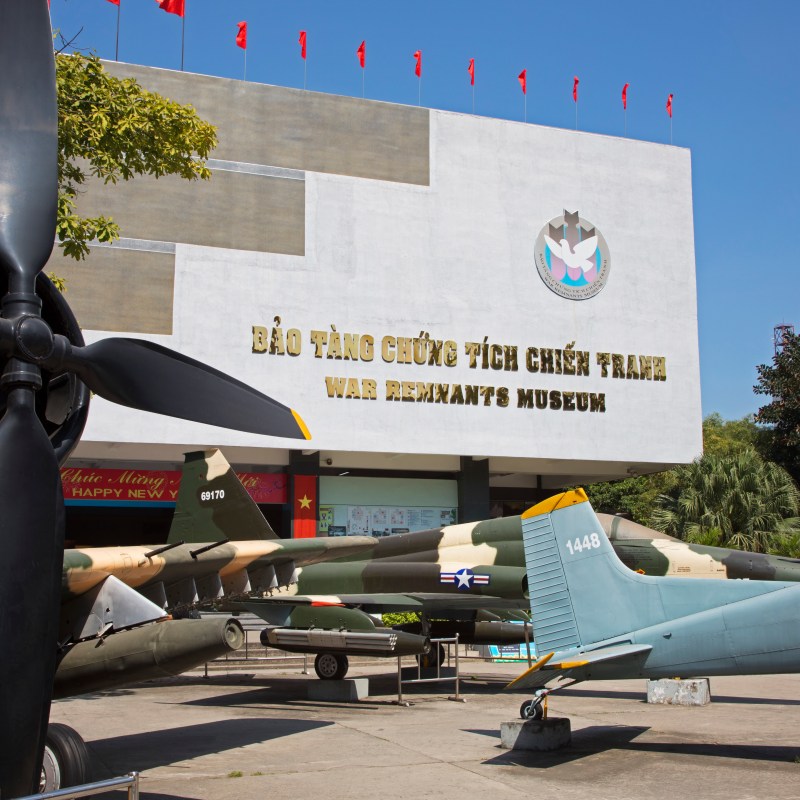
[The World Tour of Oopsies is an ongoing series of travel stories about my first decade of travel. During these adventures and misadventures, I had to unlearn many things I thought I knew about life. Welcome to my miseducation.]
Videos by TravelAwaits
Catch up on the World Tour of Oopsies travel stories:
Part I / Christmas Break
Want to know one of the odder parts of traveling the world for college? It made seasonal breaks an awkward time.
Some of our host countries were more affordable than others—but flights back to the US weren’t usually within reach for those of us studying in Asia.
Our adventure in Mumbai (see: Ch. 16) was over Thanksgiving break, for example. Given the exorbitant price for flights home for the short holiday, the majority of students in my class stuck around India.
When the longer winter holiday rolled around, many of us set our sights on international vacation spots.
My partner and I decided to visit Vietnam for the winter break. We would spend a few days in Ho Chi Minh City, then take an overnight sleeper train north to Hanoi before heading further east to Ha Long Bay. There, we’d spend our first Christmas together.
We packed our bags, headed to the airport, and promptly realized that we’d missed our flight—which was scheduled for 1 am and not 1 pm. (It wouldn’t be the last time on my world tour.)
We’d been in India for months, meaning we knew to use military time. In this case, we just assumed there was no way a flight would depart at 1 am.
So, we missed our first ticket to Vietnam, then had to pay in full for another set of flights. By the next day, we’d made it to Vietnam. We filled out our visa forms in the airport, got approved, and went on our way.
Part II / Ho Chi Minh City
Experiencing Ho Chi Minh City was sort of like experiencing Times Square for the first time. Though I had already spent time in bustling cities like New York City and, over the last few months, Bengaluru, Ho Chi Minh City had the moto factor.
If you’ve visited the capital city, I’m sure you know what I’m talking about.
Hordes of motos fill the streets, which sort of feels like a great migration. You know, like when the wildebeests crisscross the savannah of Africa. A moment of hesitation can spell disaster.
The alleyways also stuck out to me. We stayed at a hostel tucked deep within a narrow, winding labyrinth of back streets—many of which led into homes where people lounged and watched TV. I also remember the many casual eateries lining the streets, where beer was warm and cost around 50 cents.
But what stands out to me most was the decision to go to a museum called the Museum of American War Crimes. It’s been open since 1975 and, since my visit, has been renamed The War Remnants Museum. (I visited in 2012.)
Part III / The Museum of American War Crimes
I’ve been to my fair share of museums, lectures, and gatherings that critique US interventionism abroad.
Learning about the intricacies of America’s very active participation in foreign affairs was a big part of earning my Global Studies degree. From foreign investment in Costa Rica to seed distribution programs in India, the US has an extremely active roster of international projects, most of which sprang up after WWII.
We haven’t exclusively made friends in these many escapades, but how often are we exposed to what locals think about American intervention?
When the museum first opened in 1975, it was called the House for US and Puppet Crimes, if that paints a stronger picture. Again, by the time I visited, authorities in Vietnam had renamed it the Museum of American War Crimes.
So… what was the visit like?
For me, the Museum of American War Crimes was a sobering peek into what it’s like being on the other end of the American Dream. When I first arrived, I saw plenty of weaponry and armed vehicles left behind—hence the new name of American ‘remnants’.
You can also squirm through some of the tunnels used by the Viet Cong and take a closer look at the death traps they set. These are the Cu Chi tunnels, and they’re way more cramped and extensive than most people think.
Inside, we explored exhibit after exhibit that showcased the real-world realities for Vietnamese people who had to rebuild their lives in a devastated world. The Agent Orange exhibit is particularly nauseating—the photos aren’t blurred or otherwise doctored to make them more palatable.
It was a sobering experience, as you can imagine.
Hours after the visit, my mind began shifting gears, drifting toward the veterans whom I knew growing up in the Midwest. It was hard to picture them as aggressors because many had visible and invisible scars from their time serving. On top of that, some were drafted rather than being willing participants.
I also think about most is Agent Orange and Napalm—two chemicals that were developed and used to inflict a maximum level of destruction on the jungles and growing fields of Vietnam. According to Dow, studies have ‘not established a causal link to any disease, birth defects or other transgenerational effects’ due to the use of Agent Orange.
